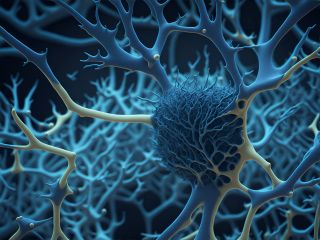Therapy
How Can Neuroscience Explain Psychotherapeutic Change?
Restructuring the world model through synaptic weight reconfiguration.
Posted July 28, 2024 Reviewed by Gary Drevitch
Key points
- Individuals create internal world models based on past experiences to predict future events.
- Adverse life experiences can lead to the establishment of maladaptive predictions about the world.
- Updating our predictive models involves inducing prediction errors that reconfigure synaptic connections.
- Most psychotherapeutic techniques work by inducing prediction errors, thus reconstructing the world model.

Psychotherapy is widely recognized for its effectiveness in treating a variety of mental health conditions. Empirical studies, both quantitative and qualitative, along with meta-analyses and reviews, consistently demonstrate that psychotherapy yields positive outcomes [1].
However, the mechanisms through which these therapeutic effects are achieved remain somewhat elusive [2]. One prevalent hypothesis posits that psychotherapy works by restructuring or updating the client's perception of situations that contribute to their problems, thereby transforming maladaptive meanings into adaptive ones [3].
This process involves revisiting and reinterpreting distressing situations to update the individual's worldview. Through this cognitive restructuring, symptoms are alleviated, and emotional distress is reduced. While this concept is familiar to practicing psychotherapists, a scientific model to explain this phenomenon can be found in the principles of contemporary neuroscience, particularly the framework of predictive processing (PP).
Predictive Processing
The PP framework suggests that individuals construct an internal model of the world based on past interactions with their environment [4]. This model is then continuously used to predict future situations. For example, if you have been in a particular room several times, you form a mental representation of how the room looks and where different objects are situated. You then expect to see the same arrangement each time you enter.
A key concept within this framework is the prediction error. If you enter the room and find the furniture missing, the discrepancy between your expectations and the actual situation generates a prediction error. This error compels you to update your internal model of the world to reflect the new reality correctly.

From a neurological perspective, this updating process involves the reconfiguration of synaptic weights [5]. When a prediction error occurs, neural circuits in the brain are activated to adjust synaptic connections, thereby modifying the internal model of the world. This synaptic plasticity is the brain's way of learning from new information and experiences, making it a crucial mechanism for adapting to changing environments and correcting maladaptive predictions.
Notably, the ability to construct a predictive model of the world is evolutionarily advantageous. For instance, if a mammal encounters a predator in a specific area, it learns to avoid that area in the future, thereby increasing its chances of survival [6]. However, this predictive system can also have a reverse effect: A child who learns that “the world is hostile” may continue to interpret (predict) it as such into adulthood, even when this is not the case [7].
Psychotherapy and Prediction Error
One could argue that psychotherapy can be understood as a process that leverages the PP framework to update the client's world model by inducing prediction errors. This can occur both implicitly and explicitly. Let’s consider three different cases.
- Exposure therapy. Consider exposure therapy as an example of implicit prediction error induction [8]. A client who was bitten by a dog in childhood may continue to fear dogs, believing they will be bitten again. Through gradual exposure, the client confronts their fear incrementally—first by simply looking at a dog from a distance, then by getting closer and closer, and eventually by petting the dog. Each safe encounter violates the client's prediction that the dog will bite, forcing their predictive system to reorganize. The new prediction becomes, "Dogs do not always bite."
- Therapeutic acceptance. Another example of an implicit prediction error might occur when a client struggling with excessive shame might express feelings of being fundamentally flawed. A skilled psychotherapist would not condemn these feelings but would instead accept and explore them [3]. This non-judgmental response violates the client's expectation of being judged, thereby inducing a prediction error. Over time, repeated experiences of non-judgmental acceptance can shift the client’s predictive model to believe that people do not necessarily judge them harshly.
- Cognitive restructuring and insight. Finally, an emblematic example of explicit prediction error in psychotherapy can be understood through awareness enhancement or insight. A powerful tool in psychotherapy is the use of incisive questioning to induce prediction errors. For instance, through cognitive restructuring techniques or simply through a therapeutic form of Socratic questioning, therapists can guide clients to challenge their deeply held beliefs [9].
For example, a client who believes they are inherently shameful might be asked, "How do you know others think you are shameful? Is this really based on your behavior, or is it a conviction rooted in some of your previous experiences?" Such questioning can lead to the realization that these beliefs are not universally true but are instead based on early relationships with significant others (as an example). This insight creates a prediction error, prompting the client to update their model of the world.
Predictive processing as a framework to understand psychotherapeutic change
The central idea is that individuals possess statistically structured predictive world models based on past experiences through which they interpret life events [4]. When these models are based on adverse experiences, they can perpetuate maladaptive perceptions or predictions about how the world works.
The task of psychotherapy is to update these predictive models by challenging previous predictions and evoking prediction errors. This process, rooted in the reconfiguration of synaptic connections within the brain, allows for the restructuring or expansion of the client's worldview to incorporate broader possibilities, ultimately leading to therapeutic change.
To find a therapist, visit the Psychology Today Therapy Directory.
References
Campbell, L. F., Norcross, J. C., Vasquez, M. J., & Kaslow, N. J. (2013). Recognition of psychotherapy effectiveness: the APA resolution. Psychotherapy (Chicago, Ill.), 50(1), 98–101. https://doi.org/10.1037/a0031817
Kazdin, A. E. (2007). Mediators and mechanisms of change in psychotherapy research. Annu. Rev. Clin. Psychol., 3(1), 1-27.
Wampold, B. E., & Imel, Z. E. (2015). The great psychotherapy debate: The evidence for what makes psychotherapy work. Routledge.
Friston, K. (2010). The free-energy principle: a unified brain theory?. Nature reviews neuroscience, 11(2), 127-138.
Kiebel, S. J., & Friston, K. J. (2011). Free energy and dendritic self-organization. Frontiers in systems neuroscience, 5, 80.
Suddendorf, T., & Redshaw, J. (2022). Anticipation of future events. In Encyclopedia of animal cognition and behavior (pp. 349-358). Cham: Springer International Publishing.
Smith, R., Lane, R. D., Nadel, L., & Moutoussis, M. (2020). A computational neuroscience perspective on the change process in psychotherapy. Neuroscience of Enduring Change; Oxford University Press: New York, NY, USA, 395-432.
Carey, T. A. (2011). Exposure and reorganization: The what and how of effective psychotherapy. Clinical psychology review, 31(2), 236-248.
Beck, J. S. (2020). Cognitive behavior therapy: Basics and beyond. Guilford Publications.




